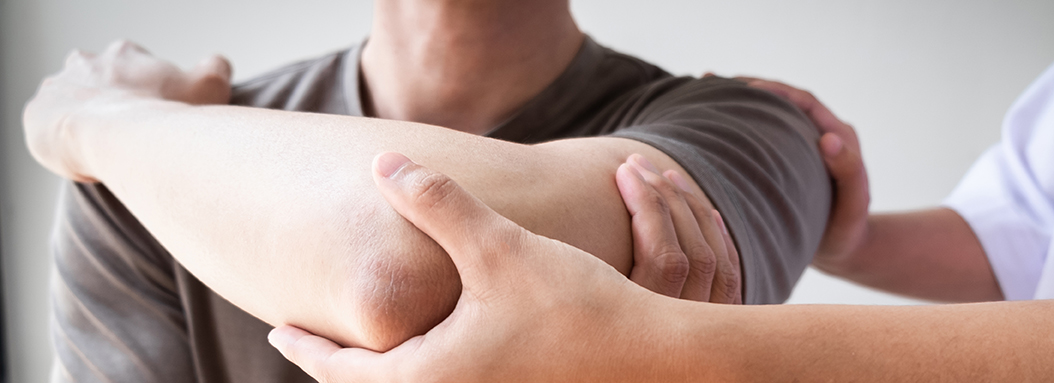
What is the rotator cuff?
“The rotator cuff is a group of four relatively small muscles. They form a cuff of tissue, especially the two rotator cuff muscles on top. They pull the ball portion of the shoulder to the cup portion of the shoulder. A lot of people have described the shoulder as a ‘golf ball sitting on a tee.’ The rotator cuff muscles and tendons are very important in that they compress the humeral head to the cup portion of the glenoid. They allow the big power muscles to be more efficient.”
What are symptoms of a torn rotator cuff?
“When you have a tear of the rotator cuff, it tends to cause weakness and pain. Patients tend to pinch part of their humeral head against that bone that sits on top (acromion) and all that can lead to pain, weakness and other symptoms. Most patients with injuries to their shoulder, especially damage to their rotator cuff, complain of pain not so much in their shoulder region – but farther down in their arm. It’s typically what we call ‘referred pain.’ It’s just the way that the nerves relay that message to your brain – you tend to feel more pain in your arm. Patients typically have pain with reaching or lifting activities, especially overhead. Another frequent complaint from patients is that they tend to have pain at night.”
What are common ways the rotator cuff is torn?
“There are several different ways to injure the rotator cuff but there are two common ways to do it. The first includes wear and tear type injuries. Patients that are involved in overhead throwing sports or patients that have a job that requires a lot of repetitive lifting or reaching. They start to get some small micro tears. Maybe some inflammation of that tissue and it doesn’t heal, and it slowly gets worse over time. The second common way to injure the rotator cuff is by a traumatic injury. Something where a patient slips and falls or lifts something that’s too heavy. That could lead to tearing of the rotator cuff as well.”
How is a rotator cuff tear diagnosed?
“I take a full history when patients tell me about their symptoms. We perform a complete physical exam. But oftentimes, the key diagnostic step is to obtain an MRI. The MRI gives me great quality information about the rotator cuff or possibly damage to the labrum or the biceps tendon – or maybe damage to the articular cartilage resulting in arthritis. Oftentimes patients don’t really have any significant structural damage. They’ve simply developed inflammation in their shoulder which is typically a problem we can treat without surgery.”
What are treatment options for a torn rotator cuff?
“Nonoperative treatment for rotator cuff tears involve things like cortisone injections, anti-inflammatory medications, physical therapy and activity modification. Oftentimes, those can be very helpful and successful. Unfortunately, when patients have a full-thickness tear of the rotator cuff, it typically slowly gets worse over time. So, most patients at that point choose to have surgery. Surgery is relatively straightforward. It’s an arthroscopic procedure typically done through small poke holes in your shoulder. I simply take the torn tendon and I reattach it very firmly to the bone. I look all around inside the shoulder to see if there’s any additional damage and treat it at that time. Patients go home the same day after rotator cuff surgery.”
What does the recovery of a torn rotator cuff look like?
“It can be a long recovery process after rotator cuff surgery. Our first goal after surgery is that we must get the torn tendon to heal. Typically, that involves a period of rest or immobilization where patients typically are wearing a sling for four to six weeks. During this time your shoulder gets stiff, and your muscle becomes weak. I will have patients start some simple range of motion exercises on their own during this time. Typically, within a couple weeks, they’re starting to work with the physical therapist to help get their motion back and their strength back. It’s not uncommon for patients to take as long as three months to start feeling good about their shoulder and sometimes up to six months or longer until they feel like they’re fully recovered after surgery.”
